It often happens that a post which began as a closer look into a poem and its context, actually goes far beyond that. So many times, I have encountered poetic texts that have become a window, into a landscape with rivers that branch out into tributaries; and then those tributaries weave through lands painted in vivid colours. I have shared, in the past, poems that commune with paintings, plays and films, art installations, iconic places, personalities and biographies, and narratives of resistance, love, faith, hope and redemption. I like this trajectory of divergence, and non-linear evolution. This path is littered with the highs of new discovery, and the immersive intellectual journey of engaging with realms of knowledge that are novel, and yet familiar, in some way, because of the threads that led to them. This has taught me perspective, and given me blueprints to negotiate multiple ways of looking at the same domain of experience. The songs I share with you today actually embody this path of discovery and association, and in discovering their stories and lifeworlds, I experienced the very feelings that I have just described.
As I write this I am reminded of Keats’s On first Looking into Chapman’s Homer, a poem about his encounter with George Chapman’s translation of Homer’s Illiad. One of the phrases he uses to describe that particular surge of emotion to which I have been referring has stayed with me since I first read the poem - ‘a wild surmise’. This poem also affirms for me the truth that it is sometimes more natural, while attempting to communicate an abstract feeling or experience, to equate it with other such felt experiences or distinct moments - to use metaphor, than to employ language to logically describe what one is feeling.
I share with you today versions of the song Karukara. Many must have heard the famous Malayalam ‘alternative rock’ rendition of this song by Avial. Their 2008 album, also named Avial, had songs with malayalam lyrics (sometimes recrafted from ‘folk’ songs - like Karukara) set to the zing and energy of deep basslines, innovative arrangements and rousing crescendos. The songs became an instant hit - numbers like ‘Nada Nada’, ‘Aadu Pembe’, ‘Chekele’, and ‘Karukara’ were favourites in college festivals and parties. These songs often blended traditional elements (religious symbolism, ritual etc.) with nature, or a modern sensibility. The diversity of their musical influences is embodied in their band and album name avial - which is an Indian dish from Kerala (also popular in Tamil Nadu and Karnataka) that is a mix of 13 different vegetables, with coconut, curry leaf etc.
The song Karukara, for instance, is an out and out rain song - with words that liken approaching dark clouds to a ‘tusker’ deity who presides over the season. The song talks about the splendour of the rains, and how the natural world comes alive with the first monsoons. Listen to this, and then I will share with you the ‘original’ song that inspired this version.
I did not know until I started working on this post (and I have been listening to Karukara on rainy days for years now) that this popular musical arrangement is actually an improvisation of a folk song written by the Malayalam poet Kavalam Narayana Panicker, for a 1979 film by G. Aravindan called Kumatty!
I heard this version and was completely taken by the naked, earthy rendition of the song (written and sung soulfully by K.N. Panicker) picturised in Kumatty.
Govindan Aravindan is one of the pioneers of independent film-making, and parallel cinema in Malayalam. He collaborated with Panicker, whose story and songs the film is based on, to create a cinematic narrative about a Pied Piper like character drawn from folk tales and children’s stories. It is a fascinating film, and has many stylistic elements that signify Aravindan’s unique approach to storytelling, and his intimacy with the culture of the place, as well as the natural setting. It is a surreal tale that rides on the wings of its many songs, and the laughter and frolic of the children in the story, whose presence dovetails the magical realism. I’m sharing here a song about the character itself, sung by the Kumatty and the children in the film, to give you a sense of what I mean:
“Head held high like the skies
Feet firmly planted on the ground
Decorated with grain cellars and floating sails
There comes Kumatty of our fairy tales
From the shoulders of flowering hills
Kumatty has come to visit this worlds
Will he come flying, or on a palanquin?
On foot, or only sitting?
The Kumatty of our fairy tales
On one ear is suspended the sun
The other is bare
His eyes are aflame, like Indra's 1000 eyes
Uprooting forest and valleys, upsetting hills
As terrifying as lightning zipping across the sky
Like the idol Perumballoor
Delirious and terrifying
Frightening us all
Such is the royal visit of Kumatty of our fairy tales”
Below is a link to the film. I’m telling you, you have to watch it!
There are also Carnatic or classical/semi-classical versions of this song that are used as accompaniments to Mohiniattam or Bharatnatyam.
Here are the words to both variations of the song - The first taken from the film, and the second from Avial’s own album art and accompanying literature.
If you like what you see, and to get little gifts of poetry/song/art in your inbox subscribe to Poetly, and be a part of the community :)




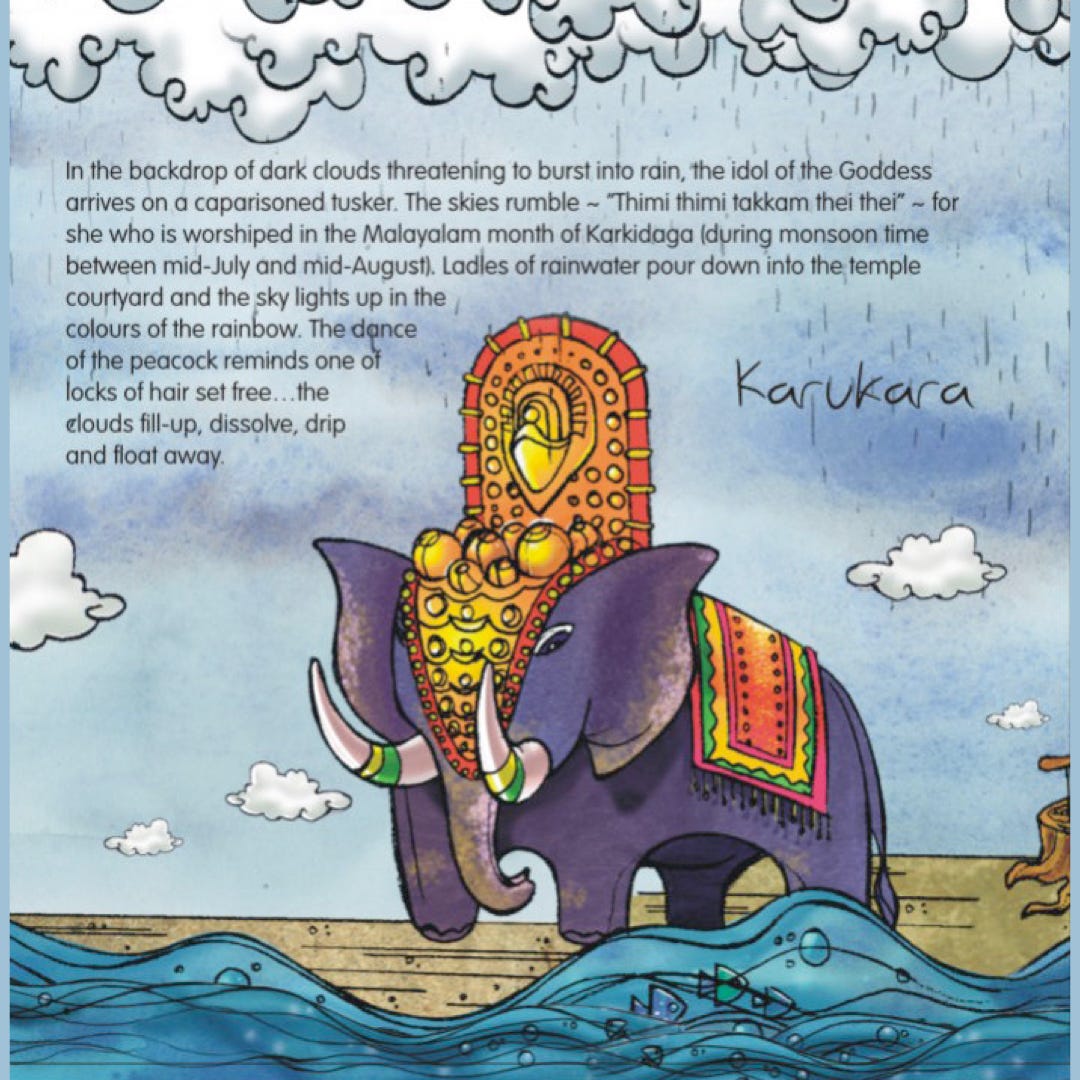
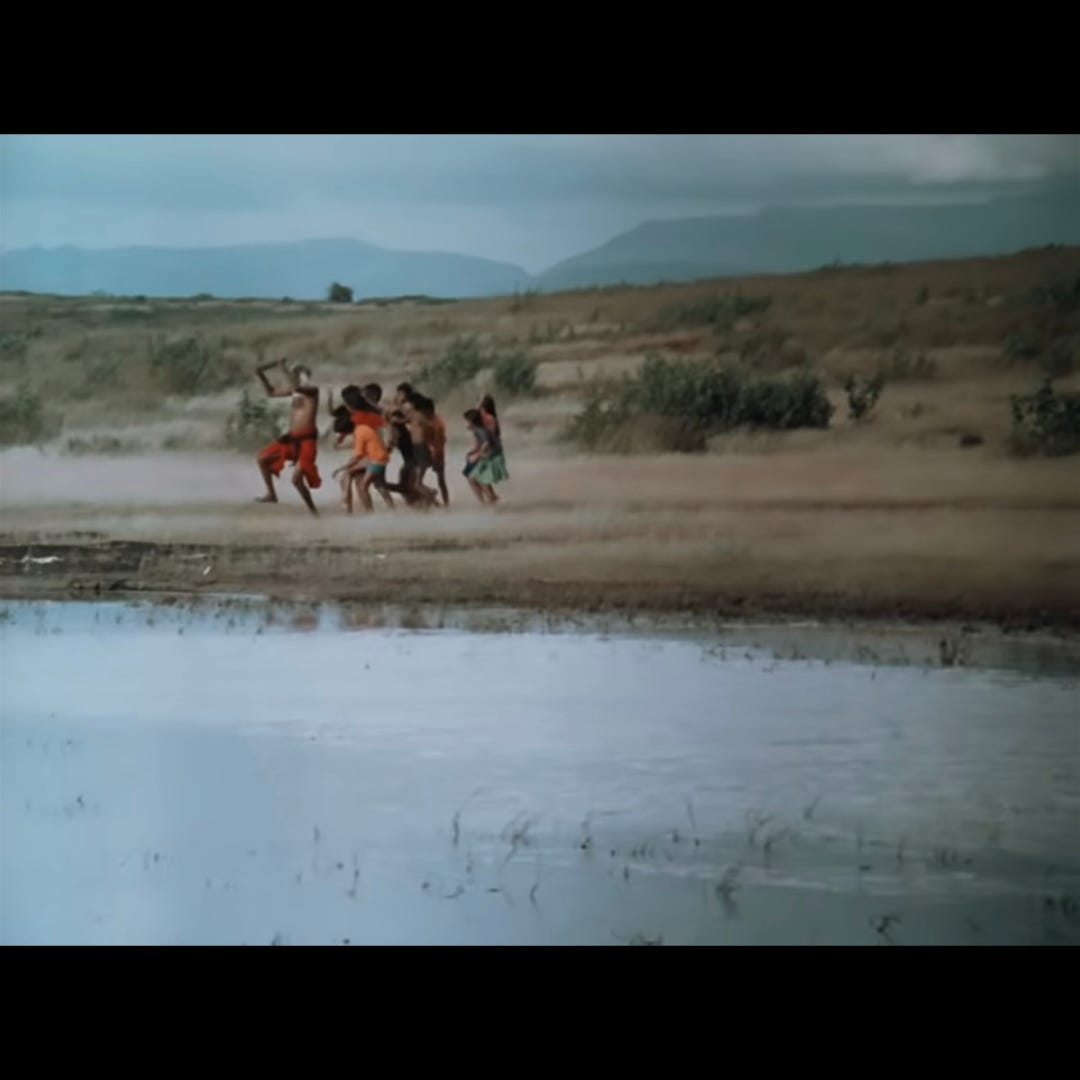
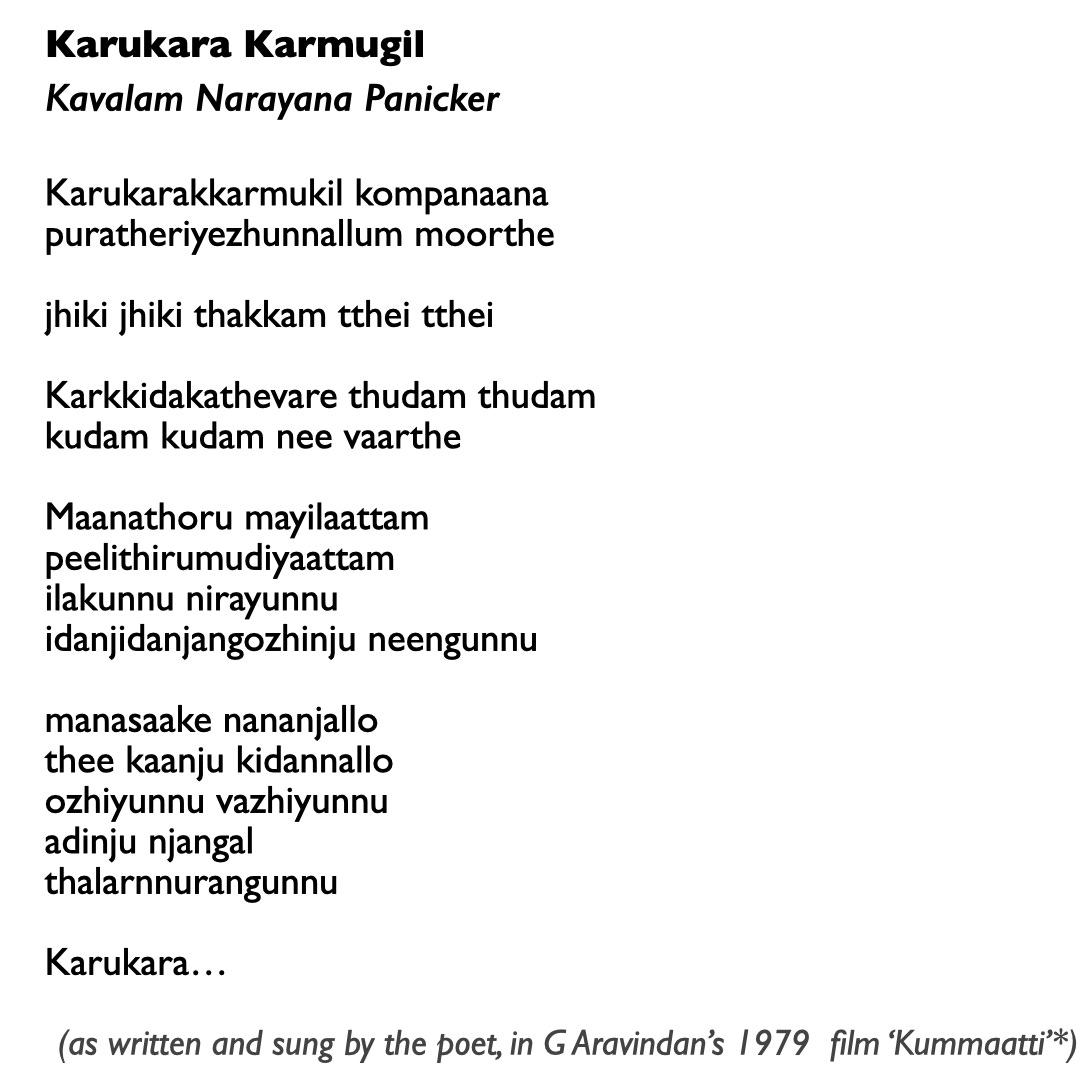
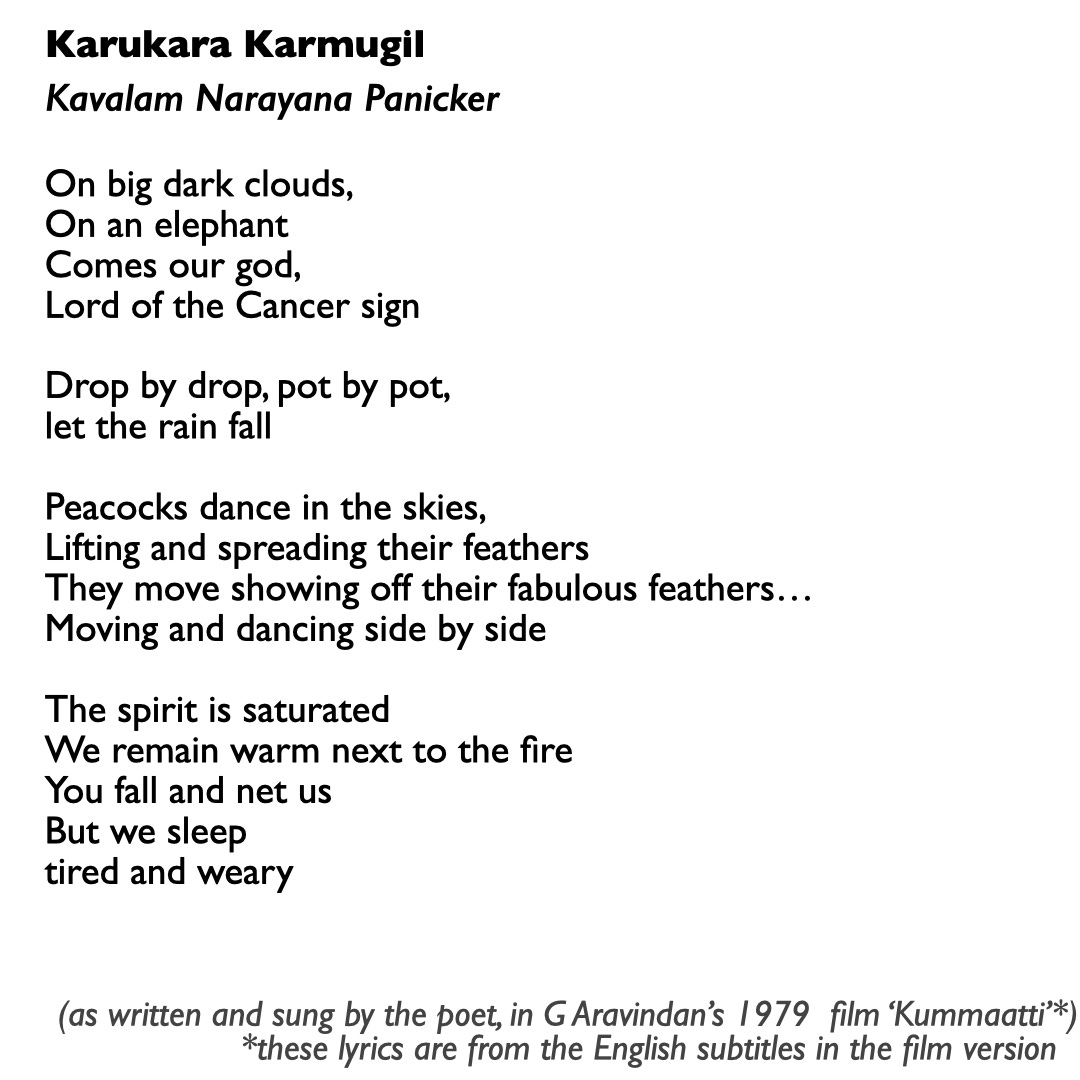
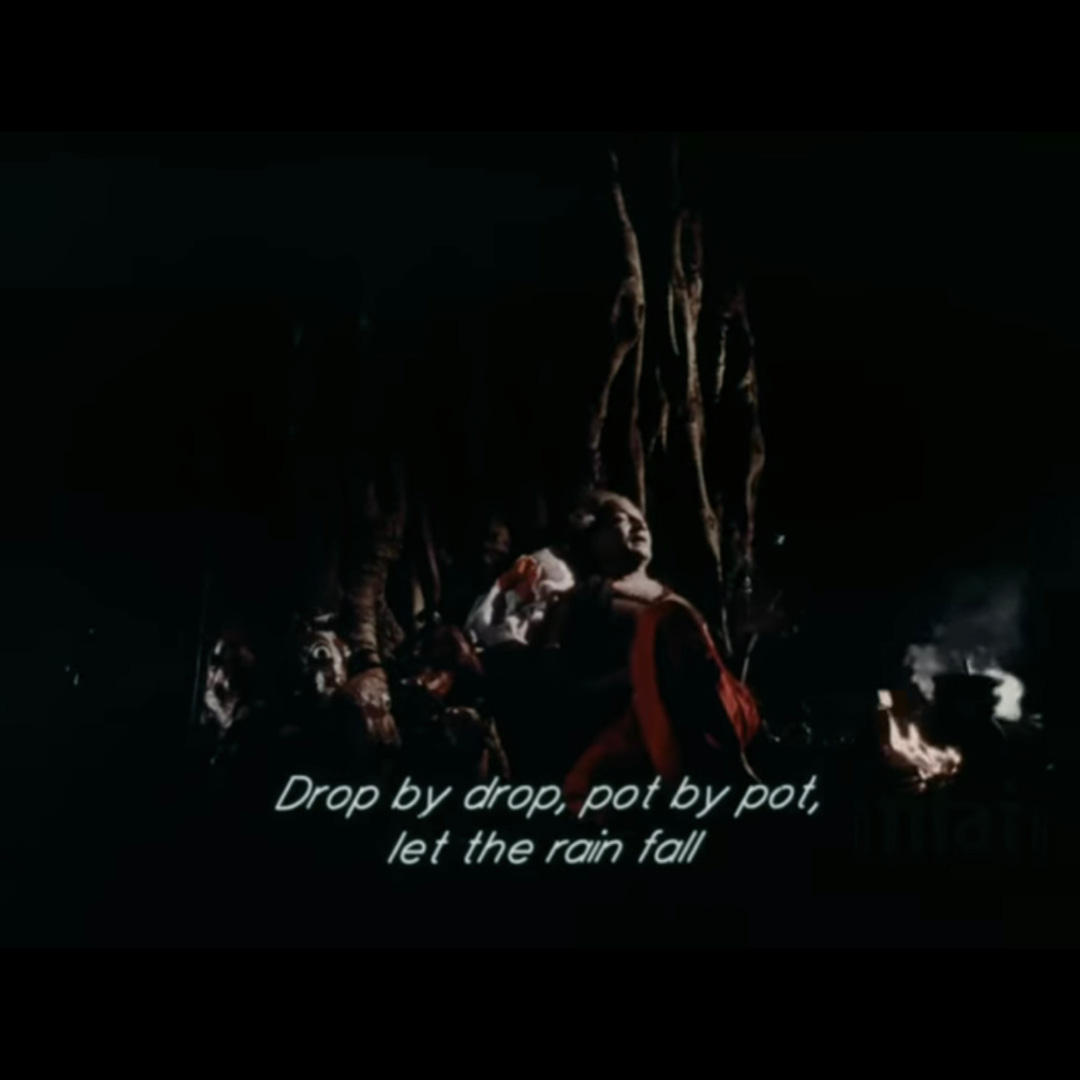

I thought you might like this, by Thomas Merton:
This Rain
What a thing it is to sit absolutely alone,
in the forest, at night, cherished by this
wonderful, unintelligible,
perfectly innocent speech,
the most comforting speech in the world,
the talk that rain makes by itself all over the ridges,
and the talk of the watercourses everywhere in the hollows!
Nobody started it, nobody is going to stop it.
It will talk as long as it wants, this rain.
As long as it talks I am going to listen.